Taking a Snapshot: Under-Screen Smartphone Cameras
Anyone who has taken a selfie with their smartphone is familiar with switching from the back-facing camera to the front-facing camera before taking the photo. Often called selfie cameras for their most popular use case, front-facing cameras are also used for video calls and as part of a facial recognition feature to unlock the device.
Until recently, front-facing cameras required smartphone makers to design a notch, hole, or other cut-out in the display screen to allow the camera an unobstructed view of the user’s face. As smartphone designs continue to evolve, bezels (the frame around the edge of a display device) continue to shrink or disappear almost entirely.
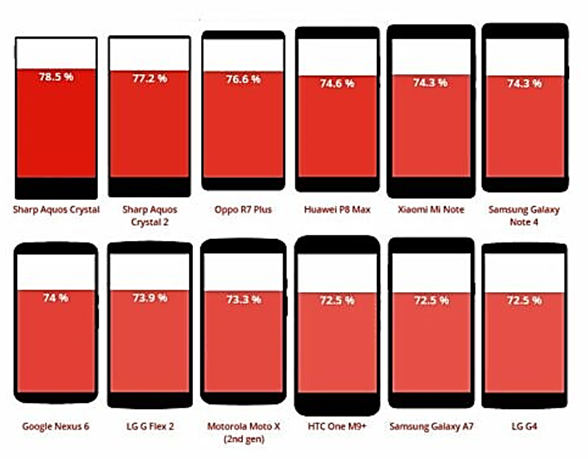
A comparison of different smartphone models demonstrates the variety of bezel form factors, which yield different screen-to-bezel ratios. (Image: Source)
Now both device makers and consumer users want to maximize the amount of screen space devoted to displaying images and content, hoping to eliminate cut-outs. The “screen-to-body” ratio (StB, the proportion of a phone’s front surface that is the illuminated screen vs. the bezel) has been shrinking for more than a decade. For example, in 2007 the phone with the highest StB ratio was the Apple iPhone, at 53%.1 By contrast, Samsung’s 2019 Galaxy Note 10 boasts a 91% StB ratio.2
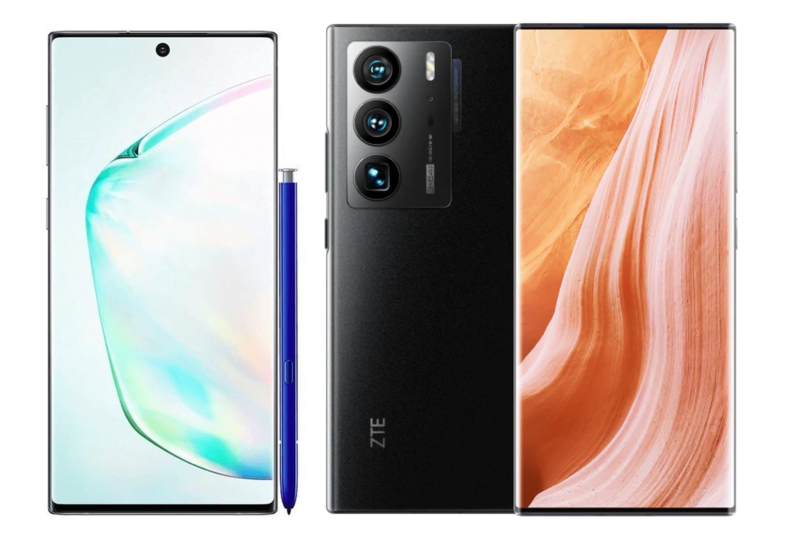
The Samsung Galaxy Note 10 with its tiny bezel, and the Axon 40 Ultra that is billed as a “bezel-less display”. (Left image © Samsung, right image © Axon)
Eliminating the Camera Cut-Out
Another method of expanding screen size is by eliminating the camera notch/hole area. To do this, smartphone makers have come up with several design approaches. The first is a pop-up camera, which is encased within the phone body. At the touch of a button, the camera unit pops out of the top or side of the phone. One advantage of this design for privacy-minded users is that the view from the front-facing camera is blocked when it’s not in use.
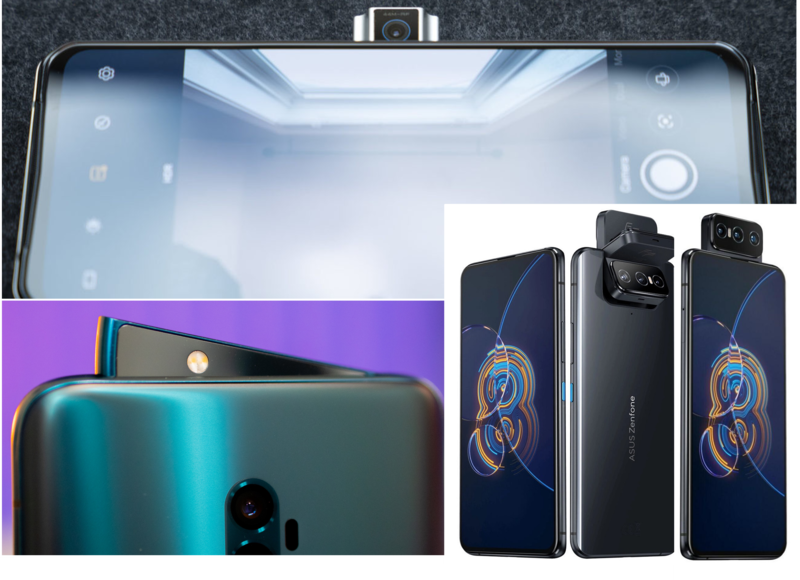
Smartphones with pop-up cameras include the Lenovo Legion Duel 2 gaming phone (top), the Oppo Reno 10X Zoom (lower left), and the ASUS Zenfone 8 Flip with a camera that flips from its back-facing home position to a front-facing pop-up (lower right). (Images: Source)
Pop-up camera models rose in popularity for several years, but fewer 2022 smartphones offer the feature. The newest design approach is to place the front-facing camera below the screen’s surface. This configuration offers the same enhanced full-screen user experience as pop-up cameras without the moving parts that can wear out more quickly or reduce dust and water resistance.
However, challenges such as image quality have slowed the release of phone models with under-screen cameras (USCs). To date, only a handful of phones offer a USC, with varying image quality. Even so, consumers are enthusiastic. In a recent poll by Android Authority,3 60% expressed interest in phones with under-screen selfie cameras, provided the image quality was good or OK. Another 17% wanted the feature even if image quality was poor.
Under-Display Technology
To capture images, the portion of a display screen in front of the USC must be transparent. Often this means the phone has a display-within-a display, essentially two layers. The primary screen is made of OLED, LED, or other standard display material, with a small cut-out area for the camera. In the cut-out area is a second display made from a different type of glass that enables the camera underneath it to capture light, while also displaying images to the user.
The transparent area can still be somewhat visible to the user, however. Images over the hole can appear slightly pixelated or are “ typically described as a ‘blurrier patch’ on the screen and can stick out when watching content in full-screen mode or gaming. However, companies are taking steps to make them less obvious to the eye. Usually, the brighter the screen is set, the less noticeable the hole becomes.”4
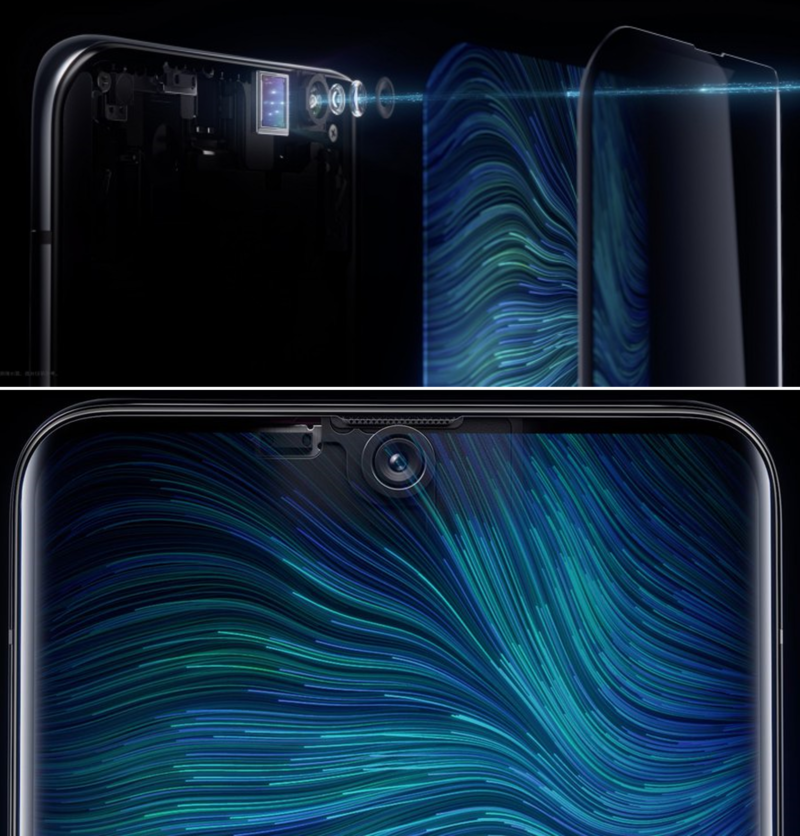
An early under-screen camera model released by Oppo in 2019 demonstrates the camera receiving light through a small transparent area of the screen (top), and also shows how the camera can be visible below the display image (bottom). (Images © Oppo)
For smartphone USC models, photo image quality is a common performance issue. Photos taken with a USC can often appear blurry or hazy. To compensate, device makers are incorporating software to filter, correct, and enhance the quality of USC photos. Post-processing can mean that there is slight lag time between shots, however.

A sample selfie taken with the ZTE Axon 20 5G under-screen camera. Software-driven post-processing can be seen in some areas, such as the smoothing at the subject’s hairline (left side of image), and the pixelated effect of the lights behind her. (Image: Source)
Ensuring Quality of Displays with Under-Screen Cameras
To provide a positive user experience and ensure the intended function and performance of a device, its display must have sufficient brightness, clarity, contrast, detail (resolution), uniformity, and be free from visual defects. As with any smartphone or display device, the production process for USC models incorporates quality inspection and measurement at multiple points—from the LED wafer stage through finished assembly.
Since the emergence of smartphones, Radiant’s light and color measurement systems have been used to test millions of displays. A Radiant ProMetric® Imaging Colorimeter or Photometer, paired with our TrueTest™ Software, can be used to perform a broad range of tests on LCD, OLED, and other displays.
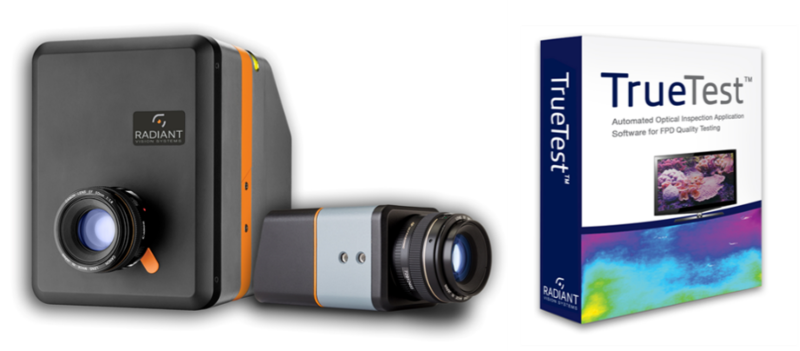
Radiant’s automated display inspection solution includes a ProMetric® Imaging Colorimeter or Photometer and the industry-leading TrueTest™ Software.
Our automated visual inspection solutions help manufacturers to increase efficiency, control production costs, and ensure visual quality of consumer electronics such as smartphones and other display devices. With a single high-resolution image, defects and uniformity issues across the entire display can be identified and analyzed. For emissive displays with independent light-emitting pixels (OLED, miniLED, and microLED), Radiant’s demura method can be used to correct and calibrate uniformity to increase yields.
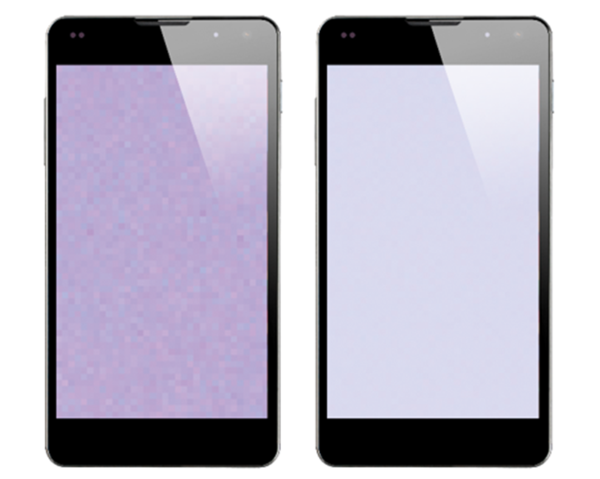
An example showing actual measurement images (enlarged for detail) of an OLED phone display before (left) and after (right) demura correction.
When measuring traditional phones with a notch or hole in the screen, it is typically necessary to adjust the measurement region of interest (ROI) in the TrueTest Software so the cut-out shape is not included in any analysis. With the new USC display devices, the ROI can include the entire rectangular area of the display.
Whether the phone uses OLED, LED, or other display technology, Radiant’s high-resolution imaging systems can capture and quantify any slight visual differences in the transparent region of the screen, down to the individual pixel and subpixel level. Our systems are CIE-matched to measure values that correlate with human visual perception of light and color. Radiant solutions enable device makers to provide the highest quality experience to match the expectations of smartphone users of today and tomorrow.
Learn more about Radiant’s display test and correction solutions in this video:
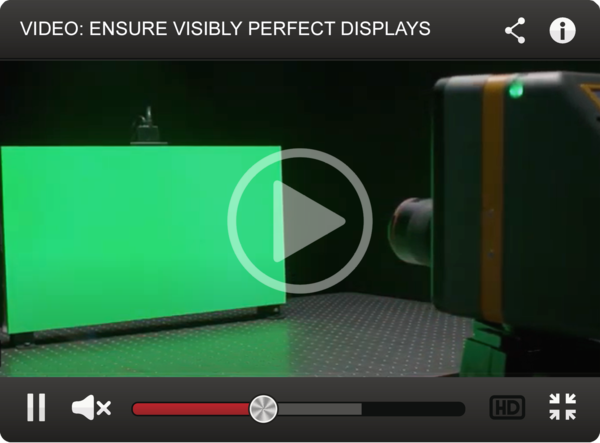
CITATIONS
- “Counterclockwise: tracking the shrinking bezels of phones over the years,” GSM Arena, June 4, 2017.
- K. Felix, “39 Smartphones with the Highest Screen to Body Ratio in 2022,” The Techtician, March 2, 2022.
- H. Simons, “Poll: You only want more under-display camera phones if image quality is good,” Android Authority, January 6, 2022.
- V. Vincente, “How Do Under-Display Smartphone Cameras Work?” How-to-Geek, November 3, 2021.
Join Mailing List
Stay up to date on our latest products, blog content, and events.
Join our Mailing List
